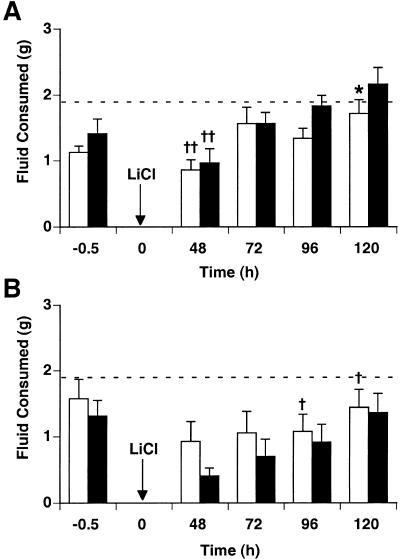Figure 2.
Conditioned flavor aversion at low and high doses of LiCl. Taste solutions of grape Kool-Aid and cherry Kool-Aid, sweetened with 0.2% saccharin, were offered for 30 min and mice were injected with either malaise-inducing LiCl or NaCl as control (n = 6–10/group). Beginning 48 h after pairing, CFA was tested in single bottle, 30 min intake tests at 24 h intervals. Arrows indicate time at which LiCl was injected (0.15 M, 20 mL/kg or 40 mL/kg, i.p.). Dashed lines represent average intakes of NaCl-injected controls (knockout together with wild type). (A) CFA after pairing grape and cherry Kool-Aid with 20 mL/kg LiCl. Both spinophilin knockout mice (white bars) and wild-type mice (black bars) express CFA at 48 h, which is rapidly extinguished. Knockouts had significantly lower intakes at 120 h when compared to wild type intakes. (B) CFA after pairing grape and cherry Kool-Aid with 40 mL/kg LiCl. There was a significant overall effect of drug, but not of test time. (*) P < 0.05 vs. wild type; (†) P < 0.05 vs. NaCl-injected controls; (††) P < 0.01 vs. NaCl-injected controls.

